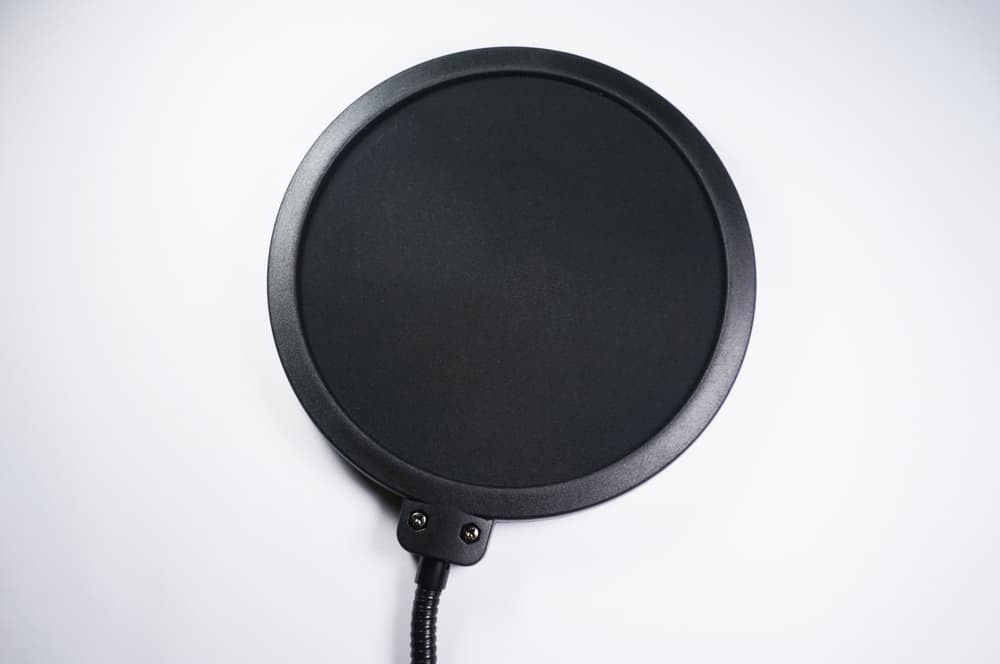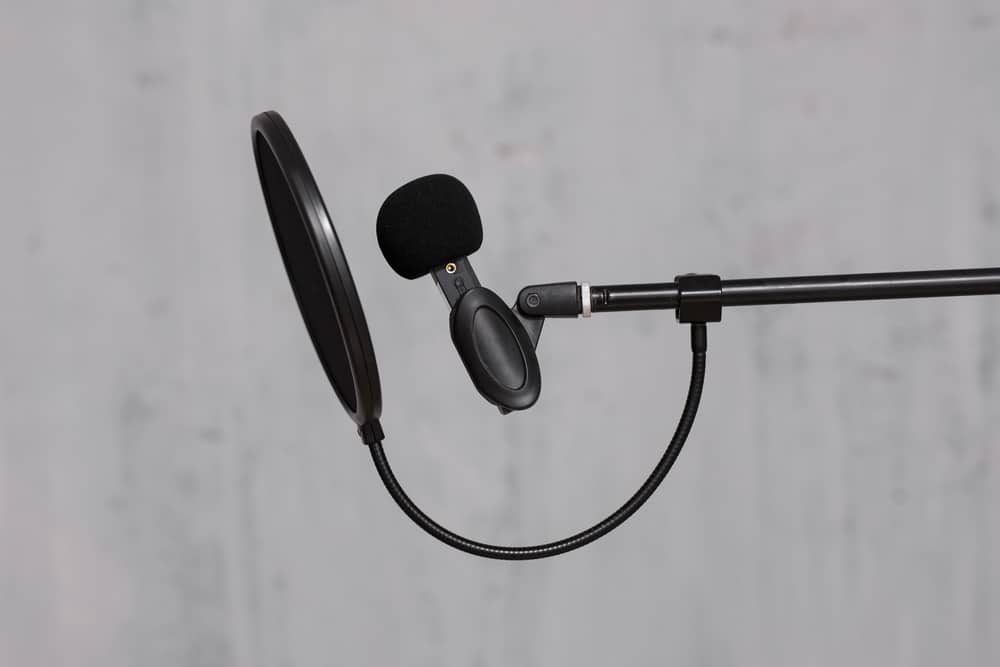
You need to deal with two main issues in recording using a microphone to ensure clean, noise-free recordings. One is the plosives, and the second is the wind. Now depending on where you are recording will determine what you are going to use.
The purpose of both foam and pop filters is to eliminate unwanted sounds in your recordings, whether in the studio or outside. Each of them delivers particular results in reducing noise, but can you use one to do the other’s job?
To determine this, we need to examine what each is designed for and how they reduce the noise in recordings.
What Does The Pop Filter Do?
The pop filter is designed to stop and disperse the hard popping sounds emitted by the voice and mouth. These are the P’s and T’s used in everyday speech, and even recording vocalists, podcasters, and voice-over artists cannot prevent them.
These sounds are known as plosives….without the ‘ex.’
Ironically, the clarity required in vocal demands is that these hard pop sounds are clearly enunciated during recording, so the pop filter is necessary for the studio. Using the wire mesh screen in front of the microphone dissipates the hard plosives from reaching the microphone.
How Pop Filters Prevent Plosives And Sibilance
Plosives are the hard consonants of English language and quite a few others. The full list of plosives is P, B, T, D, K, and G, with P being the strongest and G the weakest.
These sounds are heard when the singer or speaker expels hard gusts of air while talking or singing, and these are the ‘popping’ sounds that affect the microphone and recording.
Sibilance, or fricatives as they are also known, are the hissing snake-like ‘S’ and “SH’ sounds. Pop filters work by directing air downward and allow the sound to move directly to the microphone; this process is known as diffraction.
What Types Of Pop Filters Can You Get?
There are a few different types of filters, and one of the most common ones is the nylon mesh filters that use a double layer of nylon stretched between a metal or plastic circular frame. The two layers intercept and dissipate the plosives before they get to the microphone.
The metallic mesh pop filters are made from perforated metal or woven metal mesh, and these provide the best noise shields as the edges are specially designed and shaped to provide better air diffraction downwards.
The real benefit of pop filters is that they have little effect on the integrity of high and low-end frequencies, and metal pop filters have even less of an effect than nylon filters.
What Does Foam Do In Studio?
Inside the studio, foam is a dense material designed to reduce and dampen noise and wind moving over the microphone. Foam soundproofing covers hard reflective surfaces that could ‘bounce’ the sound back to the microphone in studios.
It also gives the space a more sonically ‘dead’ atmosphere to allow for purer recordings of both vocals and instruments. Without it, your favorite song wouldn’t sound quite the same.
Outside, foam performs the same necessary function, except this time it’s placed over the microphone, and it’s called a windscreen. This prevents wind noise when recording outdoors and would be a necessity.
Neither foam nor pop filter will remove or prevent background noise, although foam could slightly dampen the noise level. The role of these materials is different but essential to achieve clear, plosive, and wind-free recordings.
What Is A Foam Windscreen?
The windscreen is a foam cover that fits over the microphone. Besides reducing the effect of the sound of wind over the microphone, it also stops saliva and other particles from corroding the diaphragm.
It is usually made of porous polyurethane and is cylindrically shaped to fit snugly over the microphone. To provide the best protection and filtering these screens are usually about half an inch thick.
Many microphones used outdoors may have an additional windscreen built-in, which further reduces the wind noise, but one of the drawbacks is that foam can absorb high-end frequencies and result in a dull sounding recording.
After a time, the foam can become dry and brittle, resulting in bits of foam ending up in the microphone, and foam is not as effective against plosives as pop filters.
Different Types Of Windscreens
Windjammers or windsocks are commonly seen on microphones at outdoor events and are sometimes (disturbingly) called dead cats. These windscreens with synthetic fur on them work exceptionally well to dissipate the wind and still allow the audio through.
While conventional windscreens can handle gentle breezes up to around two miles per hour, windjammers with longer strands can handle wind speeds of around 15 miles an hour. Above that, you are going to get wind noise.
The blimp, basket, or zeppelins are cylindrical pill-shaped windscreens that encase the microphone completely in a steel cage, and these are the most effective in blocking out wind and other ambient noise.
Adding a windjammer with a blimp will be a super-effective solution, and it allows much more of the high-end frequencies to reach the microphone.

How To Make Your DIY Pop Filter
While a professional pop filter is preferable, you can make your own using a pantyhose and a wire hanger!
The Beatles did it in 1969 during their recording on the roof of Apple Records! Just bend the hangar into a circle, cut off one leg of the pantyhose but make sure you leave the foot intact. Then stretch it over the hangar, trim off the excess material, and tape it on, and voila! You have your pop filter!
Can You Use Foam As A Pop Filter?
Placing foam in front of the microphone would do little to reduce the plosives as it does not dissipate the sound like the wire mesh of the pop filter does. Also, the foam would filter out some of the higher frequency sounds.
Conversely, using a pop filter to try and prevent wind noise would be equally inefficient as the wire mesh of the filter would not be able to prevent wind from moving over the microphone.
While foam could reduce plosives in recordings, it would not be ideal or recommended, especially if you are recording indoors where there is no need for wind protection, which may leave your recording sounding unprofessional and with muted high frequencies.
In the broadcast and recording game, the goal is to achieve the highest quality recordings possible. If that is your goal, then use pop filters indoors and windscreens outdoors to have your recordings come out sounding clean and professional.
